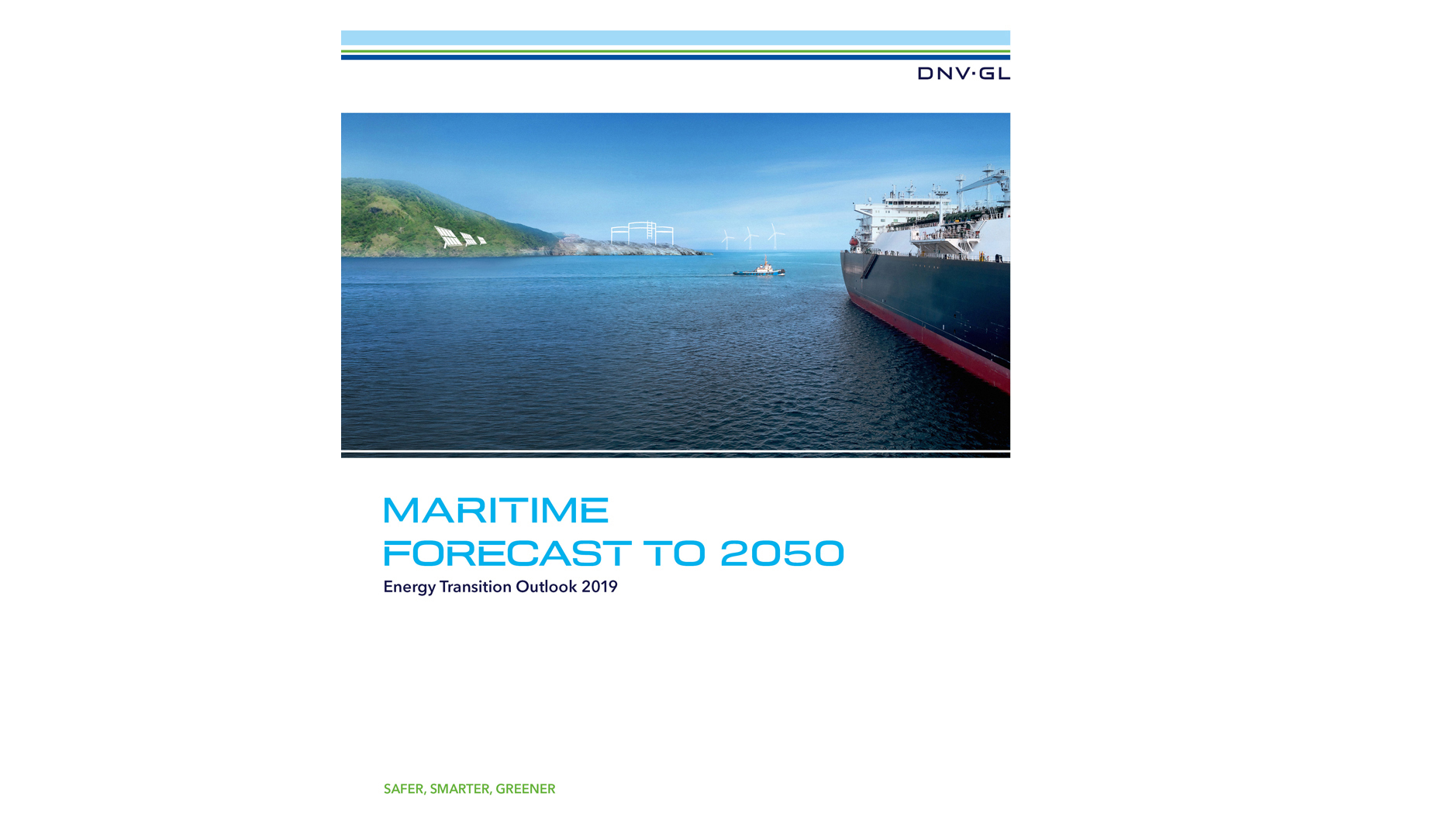Classification society releases third Maritime Forecast

DNV GL's Maritime Forecast to 2050 was released during London International Shipping Week 2019 (Source: DNV GL)
DNV GL has released its third edition of the Maritime Forecast to 2050. The classification society identifies fuel flexibility as essential to meeting the IMO’s future decarbonisation targets.
In the deep-sea sector, regarded by many as more challenging in terms of reducing carbon profiles, dual-fuel arrangements and alternative fuel ‘ready’ designs could smooth the transition by laying the foundations for a future retrofit. Combined with bridging technologies such as adaptable storage tanks, onboard systems and shoreside fuel infrastructure, this could give the industry more options as new fuels and technologies emerge, the classification society said.
Knut Ørbeck-Nilssen, CEO of DNV GL – Maritime, observed: “Ships built today will have to compete with vessels coming on to the market in five, ten or 15 years’ time, and must consider future standards to remain competitive. Considering the uncertain future that lies ahead, failing to be future-proof in the newbuilding phase could lead to that asset being stranded in the not so distant future. In addition, CO2 emissions could become an important rate differentiator and we have already seen forward-looking charterers start down this road.”
The Forecast shows that the uptake of low-carbon and carbon-neutral fuels is essential to meeting IMO GHG goals, with carbon-neutral fuels having to supply 30% to 40% of the global fleet’s total energy by 2050. Under different regulatory pathways, however, the model predicts that a variety of fuels could come to the fore. In all of the pathways, liquefied methane (from both fossil and non-fossil sources) provides a large part (40% to 80%) of the fuel mix at 2050. The Forecast also suggests that in the deep-sea sector, ammonia, biodiesel, liquid biogas and electrofuels are promising carbon neutral options, with battery, hybrid, and hydrogen solutions being potential options for the short-sea segment.
